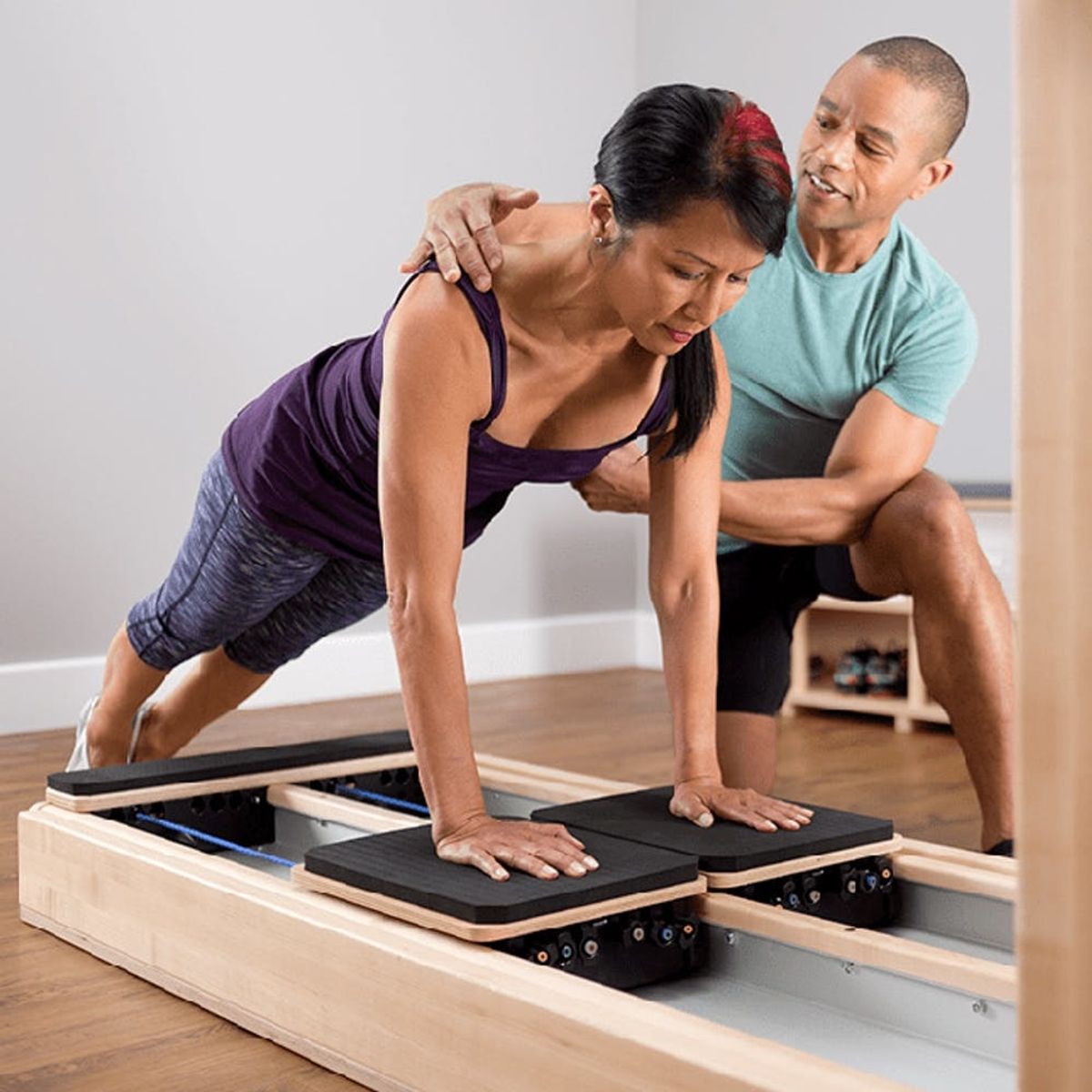Springs, platforms, and slings, oh my!
3 Workouts Beyond Pilates That Develop Core Strength

The benefits of Pilates are well known and long touted. It develops great posture, coordination, a strong core, and a balanced body. Like any discipline, though, it has limits: There are few standing exercises, little rotation, and far more spinal flexion than extension in Pilates. And, of course, the best way to challenge your body is to put it in new environments and try new exercises. With this in mind, check out these three alternative exercise systems that offer deep core (and total body!) training while addressing the limitations of Pilates.
FITSPRINGS

Founder Jill Harris developed FitSprings after two decades of teaching Pilates to create “a system that could help correct bad form and take pressure off the joints that were overworking” when her clients took fitness classes. With FitSprings, which she incorporates into her Pilates studio in San Francisco, she found a way to offer standing exercises and cardio routines to her clients, two things that she felt Pilates generally lacks, offering more balanced workouts.
The system utilizes springs that hang from the ceiling, with large fabric loops at the end. Participants step into the loops and shimmy them up their thighs, and the spring tension pulls up on the loops, adding either resistance or assistance to an exercise. You’ll fly high during the jump series and get a leg up (literally) as you plank, but you’ll be challenged by pliés and lunges. And this full-body workout doesn’t ignore the core; the springs will support you as you learn the deep core series and provide resistance to challenge you as you advance. (Photos via Informed Body Pilates)
COREALIGN

Similar to FitSprings, Corealign was designed as a standalone workout or a complement to Pilates. Jonathan Hoffman is a physical therapist who wanted to develop a system that would “create harmony between controlled stability and dynamic mobility” in the body. This means that CoreAlign challenges even basic movements with instability, engaging the core to stabilize the body as it works.
The CoreAlign itself is a basic piece of equipment: a wooden ladder that attaches to a wall and a wooden frame that sits on the floor at the base of the ladder. Two book-sized wooden platforms run along parallel tracks in the wooden frame, and their resistance is modulated by a series of bands.
One benefit of CoreAlign is that it challenges exercises you may feel like you’ve mastered, and exposes you to a variety of new ones. For example, you can challenge a plank by placing one hand on either platform and then sliding your hands forward, which will make your core work even harder. (Photo via pilates.com)
REDCORD

Redcord is a suspension-based system developed by physical therapists in Norway with the goal of targeting muscular imbalances and fixing compensatory patterns. The method isolates specific areas of the body by using multiple independent points of suspension, making for a super targeted workout with lots of support. Justin Grinius, owner of rebalanced SF, where he combines Redcord and Pilates training, says that Redcord’s “unique method compliments Pilates with higher levels of specificity.” On top of this, as you progress in your practice, the stability decreases, which means a more intense workout for your core. Redcord can be used therapeutically as well, by supporting the spine “to turn off compensatory muscle firing patterns and reactivate pain-free movement,” says Grinius. (Photo via Laurie Chapman/rebalanced SF)
What’s your favorite way to train your core? Let us know @BritandCo!



















